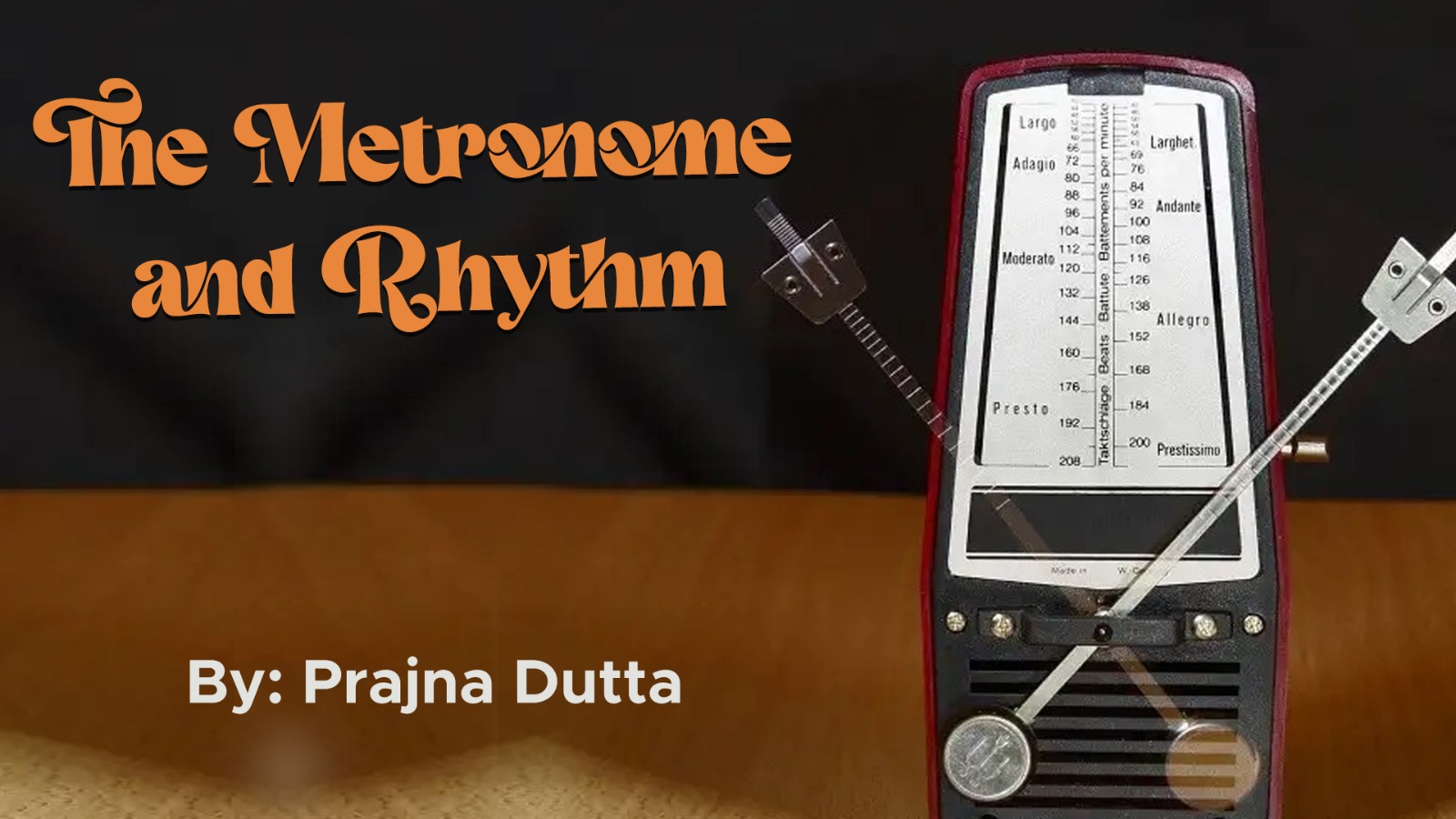Introduction:
In the world of music, rhythm serves as the heartbeat that gives life to a composition. It provides structure, energy, and a sense of time. And while rhythm can be felt and expressed intuitively, the metronome stands as a reliable tool to precisely measure and maintain rhythmic consistency. In this chapter, we will explore the metronome's role in music, its history, its impact on musicians' skills, and its significance in various musical genres.
Section 1: What is a Metronome?
A metronome is a device used to mark time by producing a regular, audible beat. It typically consists of a pendulum or an electronic mechanism that swings back and forth or emits a clicking sound. The tempo, or speed of the beat, can be adjusted to suit the desired pace of a musical piece. Metronomes are available in various forms, including mechanical, electronic, and digital versions.
Section 2: The History of the Metronome
The concept of the metronome can be traced back to the early 19th century when Johann Nepomuk Maelzel, an Austrian inventor, patented the first mechanical metronome in 1815. Maelzel's device featured a pendulum that could be adjusted to different tempos. This invention revolutionized the way musicians approached rhythm and timing, allowing for precise tempo control during practice and performance.
Section 3: The Importance of Rhythm
Rhythm is an essential element of music, serving as its backbone. It establishes the pulse, groove, and framework upon which melodies, harmonies, and lyrics are built. Whether it's a delicate waltz or a thunderous rock anthem, rhythm provides the foundation that connects musicians and listeners alike. Developing a strong sense of rhythm is crucial for musicians of all levels and across all genres.
Section 4: The Role of the Metronome in Practice
The metronome is a valuable tool for musicians in their practice routines. It helps in developing a precise sense of timing, improving rhythmic accuracy, and building internalized pulse. By setting the metronome to a desired tempo, musicians can work on their rhythmic skills, gradually increasing the speed as they become more proficient. Regular practice with a metronome can also enhance musicians' ability to play in sync with other musicians and maintain a steady tempo during performances.
Section 5: Metronome and Musical Genres
While the metronome is widely used in classical music, its influence extends to various genres. In jazz, for instance, the metronome helps musicians develop a strong sense of swing and syncopation. In electronic music, where precise timing is critical, producers and DJs often rely on metronomes to ensure impeccable rhythm and synchronization. Even in genres like rock, pop, and folk, where a looser sense of time may be desired, the metronome can still serve as a helpful practice tool for honing rhythmic skills.
Section 6: Beyond the Metronome
While the metronome is an invaluable aid for practicing rhythm, it's important to remember that music is a living, breathing art form. While maintaining a steady tempo is essential, musicians must also be able to adapt and respond to the expressive requirements of the music. As musicians progress in their skills, they can explore variations in tempo, rubato (tempo fluctuations), and other expressive nuances that go beyond the strict adherence to a metronomic beat. This flexibility allows musicians to infuse their performances with emotion, dynamics, and a sense of musicality that goes beyond the mechanical precision of a metronome.
Section 7: Developing a Healthy Relationship with the Metronome
While the metronome is a valuable tool, it's important for musicians to develop a healthy relationship with it. Overreliance on the metronome can sometimes lead to a rigid and robotic interpretation of music. To avoid this, musicians should use the metronome as a guide and gradually wean themselves off its constant presence. Once a solid sense of rhythm is developed, musicians can experiment with playing without the metronome, exploring their own internal pulse and developing a more organic connection with the music.
Section 8: Expanding Rhythmic Vocabulary
While the metronome helps to develop a strong sense of timing, it's also essential for musicians to expand their rhythmic vocabulary. Exploring different time signatures, syncopated rhythms, polyrhythms, and complex rhythmic patterns can greatly enhance a musician's rhythmic capabilities. By diversifying rhythmic practice exercises and incorporating them into their routine, musicians can broaden their rhythmic horizons and become more versatile in their playing.
Section 9: Collaborative Rhythm
In addition to individual practice, the metronome can also facilitate collaborative rhythm. When multiple musicians play together, maintaining a consistent tempo is crucial for a tight and cohesive performance. By using a shared metronome, musicians can synchronize their playing, ensuring that everyone is on the same page rhythmically. This is particularly important in ensemble settings, where each musician's contribution adds to the overall rhythmic tapestry.
Conclusion:
The metronome serves as a faithful companion in a musician's journey towards rhythmic mastery. It provides a reliable reference point, helps develop precision and accuracy, and contributes to the overall cohesion of musical performances. However, it's important to remember that music is an art form that goes beyond rigid mechanical timing. Musicians should use the metronome as a tool to strengthen their rhythmic foundation but also explore expressive variations, adapt to different genres, and develop their own internal sense of pulse. By striking a balance between metronomic precision and artistic freedom, musicians can unlock the full potential of rhythm in their musical endeavors.

Comments